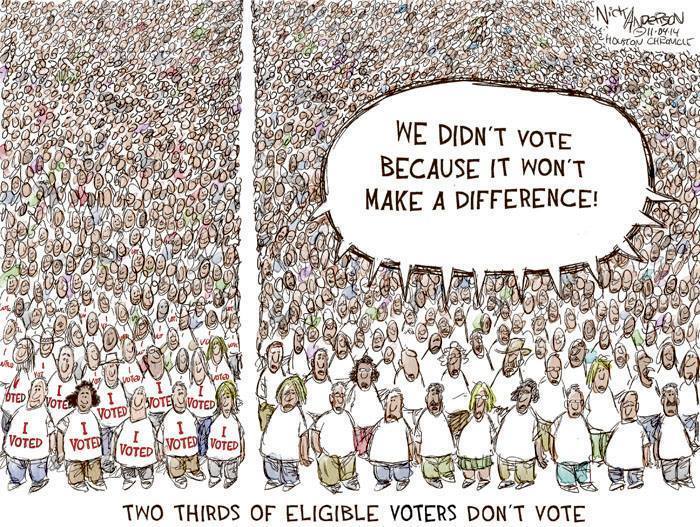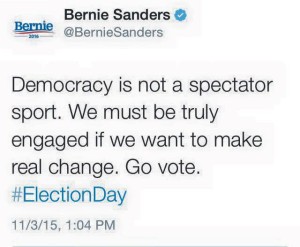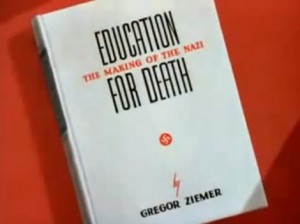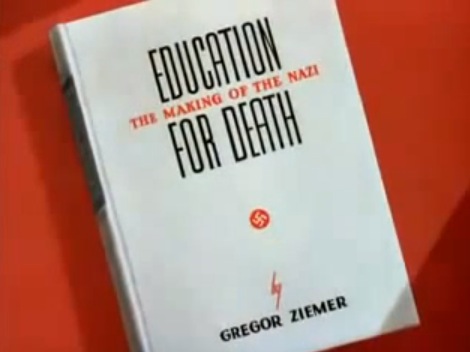In normally hot Texas, pipelines and wind turbines are not winterized like they are up north. But it's freezing there and people are not getting electricity.
When voters don’t vote do falling trees make sounds in the forest?

I don’t know why people tie themselves into pretzels over this: it’s simple math. Two thirds (2/3) of eligible voters don’t vote. If only 1 in 3 people votes, it is true that 1 person will be making decisions for him/herself – plus for the other 2 people who didn’t vote.
There is nothing noble about voting, but it is a pretty sure-fired way to show your elected official that you are willing to show up at the polls. This sends a clear message that you can vote him/her out of office – which is their job – if s/he doesn’t represent you well.
This means that YOU have the power to fire politicians who refuse to be accountable to you and your wishes. And we all know that nobody wants to get fired so imagine the power in your poll-button-pushing fingertips.
 Accountability means representing you authentically as constituent representatives, and you must do your job as a democratic citizen in order to make this possible. You must express your opinions, preferences and interests to your elected officials and then hold them responsible for doing their job as by representing what you want, and what is good for you. As opposed to representing their own interests, or the interests of big companies or powerful people who want them to do things that are not good for you or other constituents.
Accountability means representing you authentically as constituent representatives, and you must do your job as a democratic citizen in order to make this possible. You must express your opinions, preferences and interests to your elected officials and then hold them responsible for doing their job as by representing what you want, and what is good for you. As opposed to representing their own interests, or the interests of big companies or powerful people who want them to do things that are not good for you or other constituents.
This requires a bit of work on your part, but that’s what democracy is all about. And you do believe in democracy, don’t you?
In conclusion:
#1 How in God’s name can you get social change going in a democracy without people voting?
#2 You need to vote.
#3 That’s it.
If you’re looking for the relationship between voting and felled trees, it is this: not voting makes as much sense as asking the question of whether a tree makes a sound when it falls in the forest if no one is there to hear it fall. Actually, who cares and what difference does it make? This is nonsense, don’t waste your time thinking about it. Go vote.
Writing tip: add visualization with just a few extra words
Maybe he’d wait until tomorrow, take the sensible route, lay low until Chichi walked into the village early, as she often did, carrying her big canvas tote.
This cartoon shows us where we DON’T want to be – in a place of hate
 My friend David Meza sent me this anti-Nazi propaganda cartoon created by Disney during WWII to stimulate United States citizen’s hatred for Germans. I’m a Jew who lost family in Hitler’s holocaust, so I’m far from being a Nazi sympathizer. But, I like to remember that not everything that reinforces my experiential and cultural judgments is factual or true. And I am a lover of truth. So, please, when watching this disturbing 10 minute cartoon portraying how Nazis killed love and hope in their young men to make them into the optimal fighting machines they wanted them to be, keep in mind that this is the American propaganda version of Germany. What really went on there may have been quite different from what this film portrays.
My friend David Meza sent me this anti-Nazi propaganda cartoon created by Disney during WWII to stimulate United States citizen’s hatred for Germans. I’m a Jew who lost family in Hitler’s holocaust, so I’m far from being a Nazi sympathizer. But, I like to remember that not everything that reinforces my experiential and cultural judgments is factual or true. And I am a lover of truth. So, please, when watching this disturbing 10 minute cartoon portraying how Nazis killed love and hope in their young men to make them into the optimal fighting machines they wanted them to be, keep in mind that this is the American propaganda version of Germany. What really went on there may have been quite different from what this film portrays.
The cartoon disturbed me for another reason. In the militaristic, unfeeling youth mindlessly pledging obedience to the heartless Nazi philosophy, I see too many parallels with American society today. Which makes sense, right …. as this film is an American brainchild. Today in America, there are too many parents and children taking an approach to education and career preparation that embraces arrogance, elitism and a willingness to hurt anyone who blocks a student’s path to academic success, job security and the acquisition of material goods. In today’s education system, financially stable parents want their children to be separate from those who are not; standardized tests which are culturally skewed to favor middle class children over others and are used as leverage for separating students by economic class or ethnicity. And Blacks, Latinos and other students who struggle with the challenges poverty exerts on their school performance – and their lives overall – are ruthlessly deemed by financially secure student families to be worthy only of condemnation, and neither of inclusion nor assistance.
I am so sure we can do better. Let’s get busy creating a collaborative society that makes room for everyone to find their strength and the place where it fits into our world.



